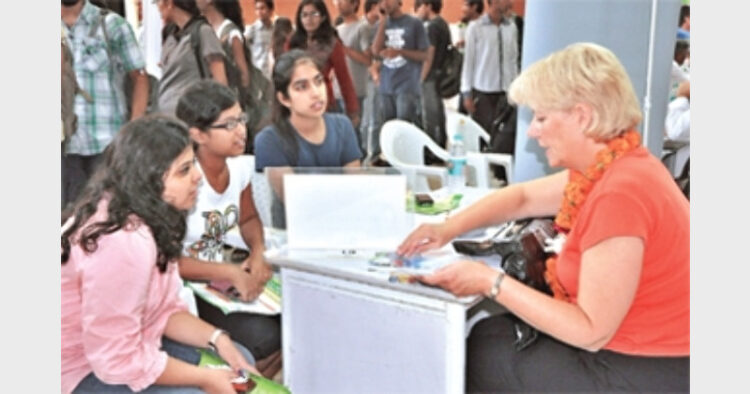Column : The Moving Finger Writes
According to Higher Education Founding Council for England (HEFCE) there is a notable hike in the number of Indian students going to the United States and Australia.
The question is: In what way are Indian students gaining from studying abroad? Are we to presume that every college in the US and Australia is better than an average college in India? Some of the US colleges are no better than some of India’s best. At least one American University was recently found to have been a fraud, like the California-based Tri Valley University, the majority of whose students were from India.
Not much is known about the fact that India spends 13 billion US dollars each year on Indian students studying abroad. But why, one may ask. The answer is, except for one Indian Institute of Technology, not a single Indian University features in the top 200 universities in the world.
If the existing universities are of such low grade as to be the laughing stock of the world, what can we expect from additional universities? As things stand, the point is made that the primary reason for a large number of Indian students (roughly about 450,000) seeking professional education abroad, is the lack of capacity in Indian institutions. Shouldn’t attention be given to that right now?
One belief among Indian educationists is that the trend can be reversed by opening series of quality institutes with public/private partnership by completely de-regulating higher education. De-regulation of higher education in the country, according to one reliable source, will result in creating annual revenues of 50 to 100 billion dollars besides providing 10 to 20 million additional jobs in the field of education. India has only 27,000 foreign students as compared to four lakh in Australia? Are we so behind Australia in this field? Don’t we have enough talent to provide class education?
Among the first things the new government in power should do is to take up the question of higher education. Why should we spend 13 billion dollars annually when with that kind of money, we can upgrade, to begin with, our existing universities? One of the reasons why our students wish to go abroad is the fact that literally thousands can’t get admission to our existing IITs and IIMs. To begin with, shouldn’t we replicate our existing technological institutions?
Think of this: In India, an IIT student may pay an average of 120 dollars monthly fees while abroad for the same type of education an Indian student will have to pay the equivalent of 1,500 to 5,000 dollars as fees every month. In that sense the government of India is wasting over 13 billion dollars when for that same amount they can provide class education in upgraded institutions here. A suggestion meanwhile has been put forward that India must let foreign universities to set up their branches in India. The idea sounds good but the presumption is that the fees should be affordable. Even if the fees are comparatively high, permitting class universities from abroad to set up their branches in India would be financially a wiser step; at least, the money paid by fees will remain in India.
Figures of Indian students going abroad differ. According to one study conducted by one of India’s top business schools, the number of Indian students going overseas rose to a stunning 256 per cent – from 53,266 to 189,629 in just nine years (2000-2009). What this means is that we are really subsidising foreign universities. And that is a crying shame. It is difficult to believe that all our students going abroad get admission to the best universities. That is just not true. Too often, students will have to opt for universities of lesser fame. But such is our inferiority complex that a ‘foreign-returned’ gets better job opportunities than the locally graduated student. What is worse is that a student going abroad, say, to the United States or even Australia, would prefer to stay there, rather than return home. This is brain-drain at its worst.
With the Indian rupee weakening against most major currencies over the last four years, the Indian parent has to spend more today than he would have had to a decade ago.
-M V Kamath, a Senior Journalist and Editor of Illustrated Weekly














Comments